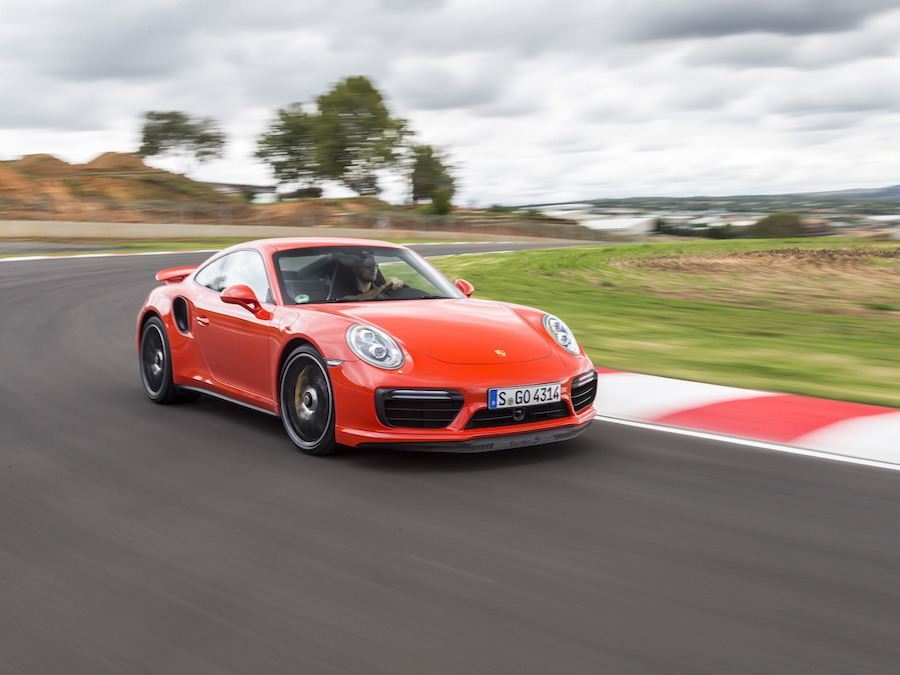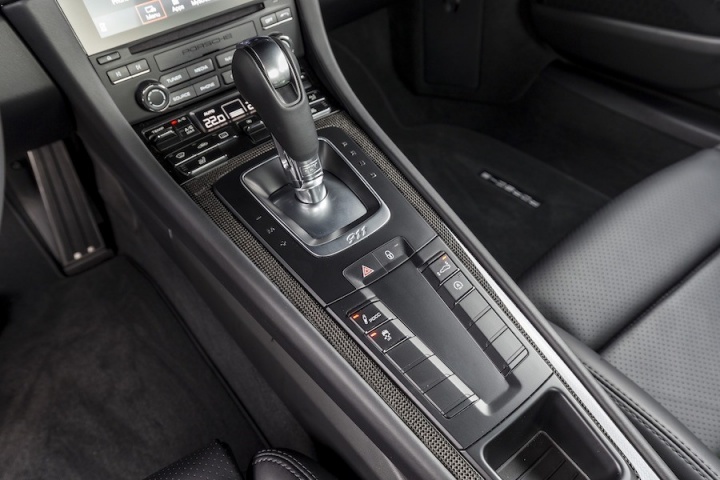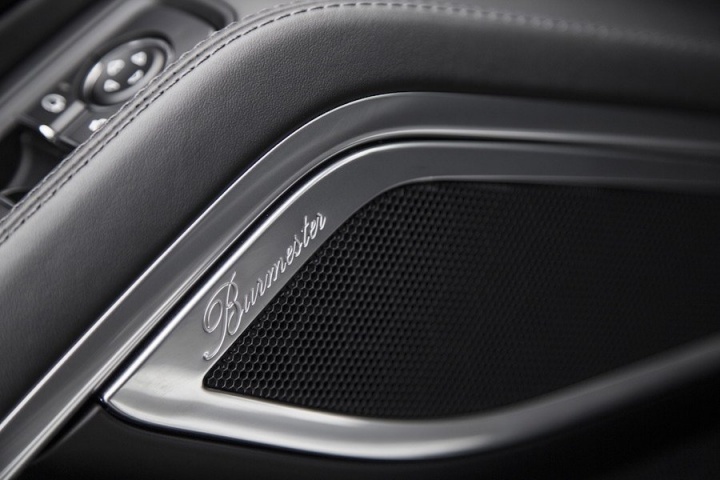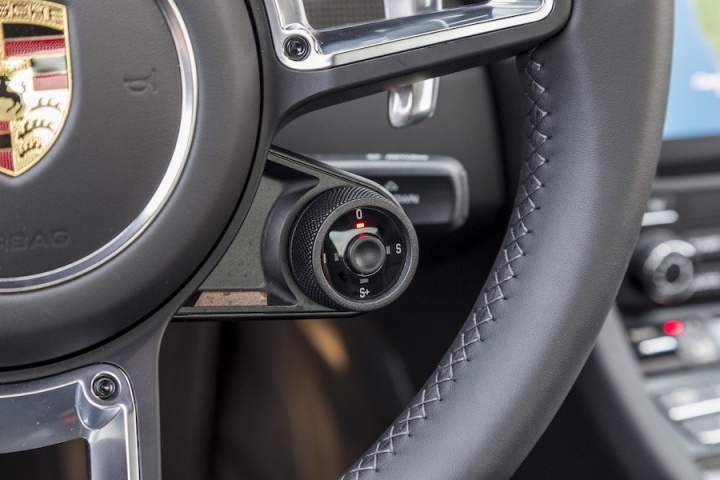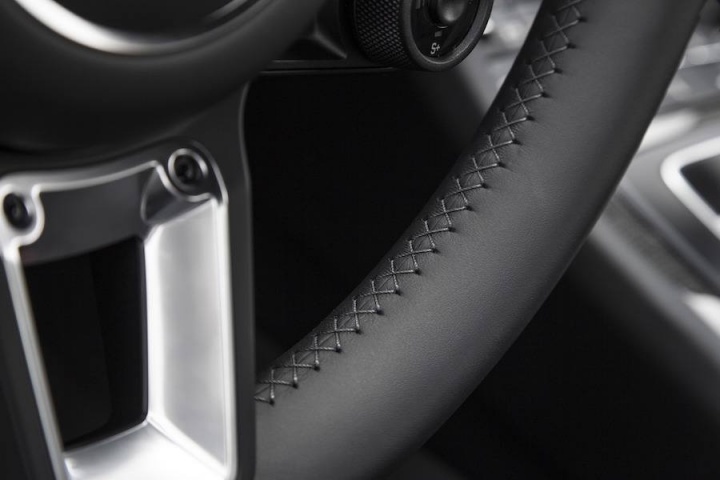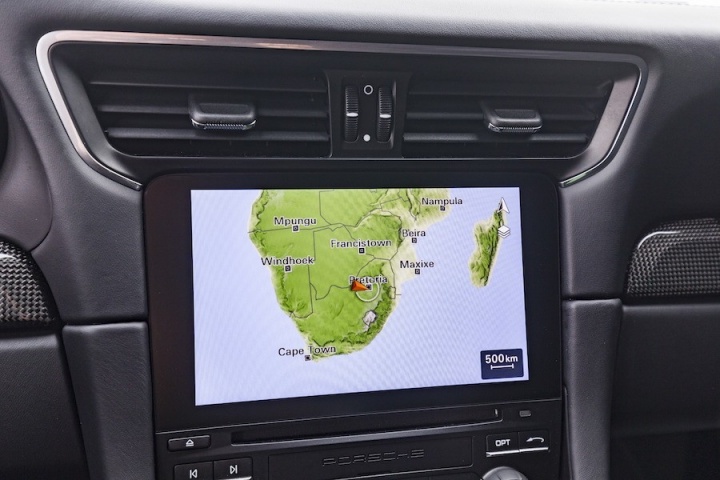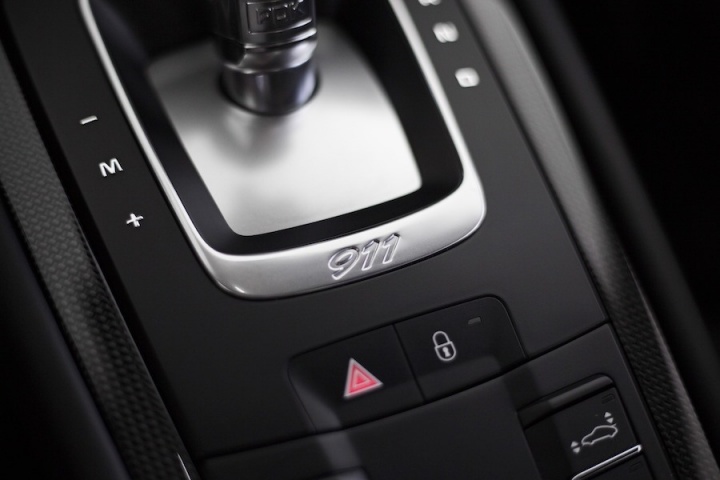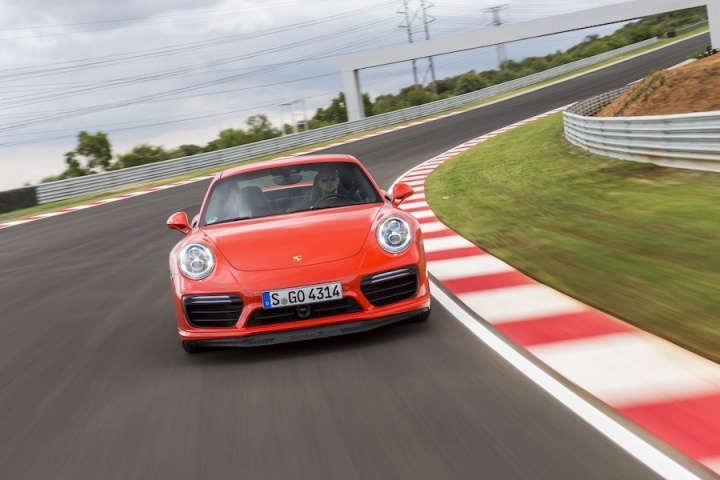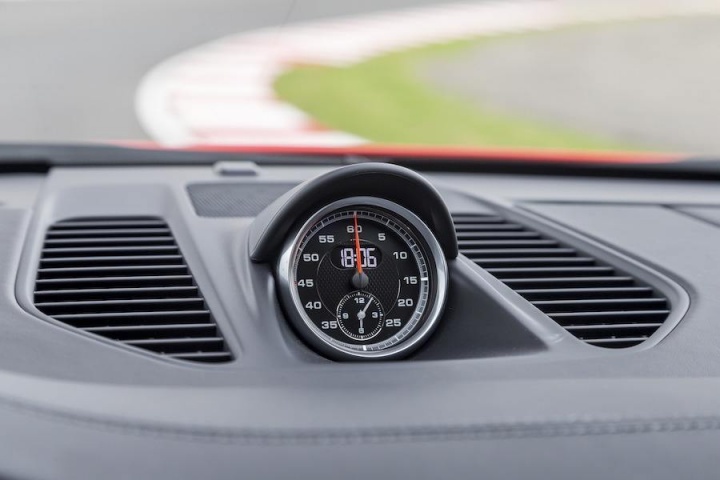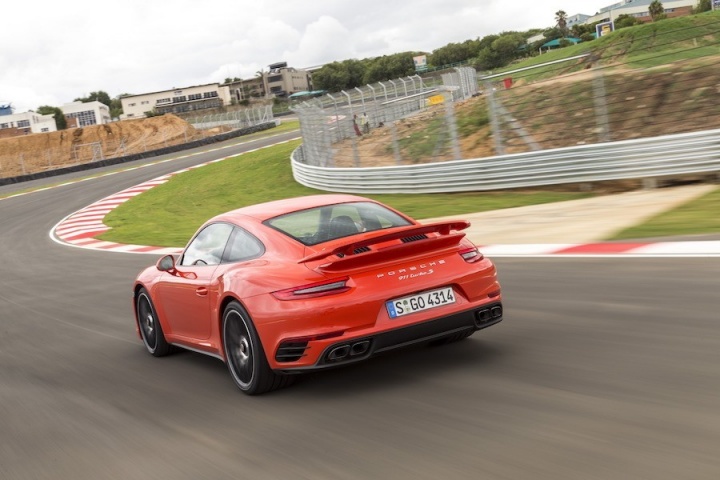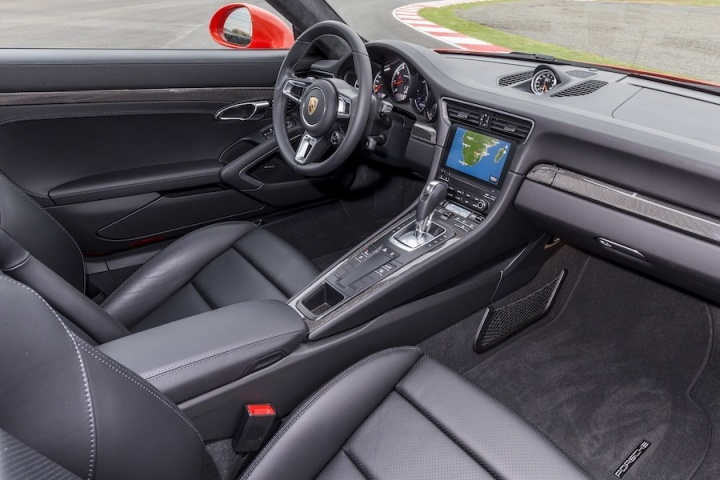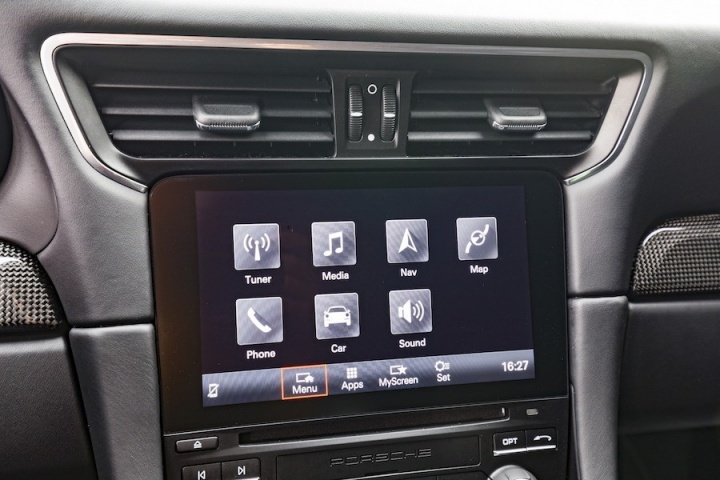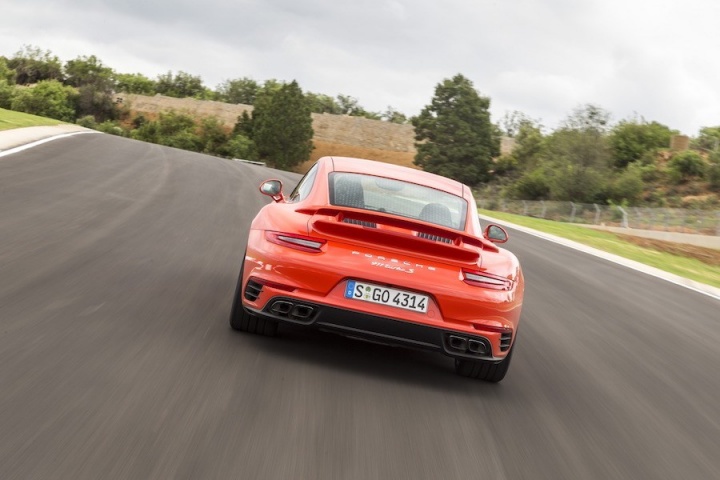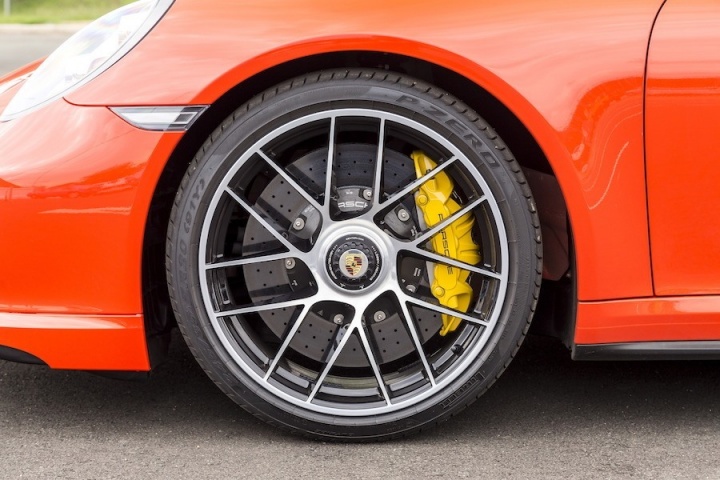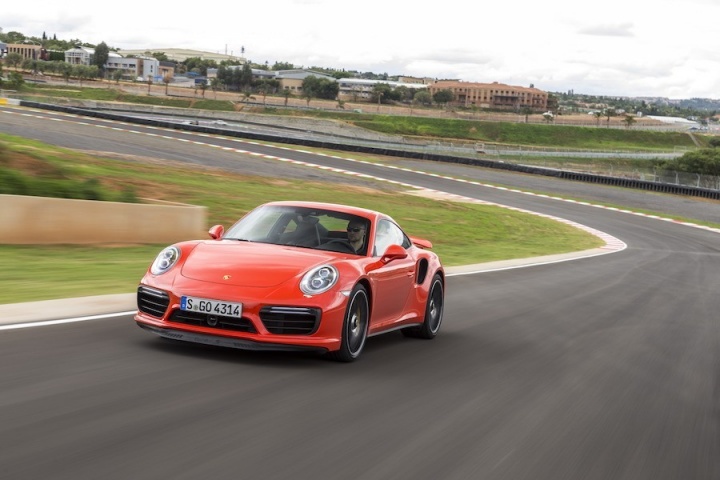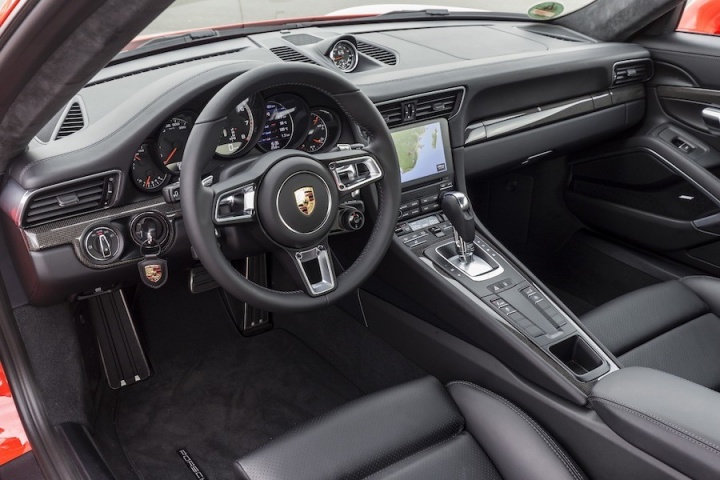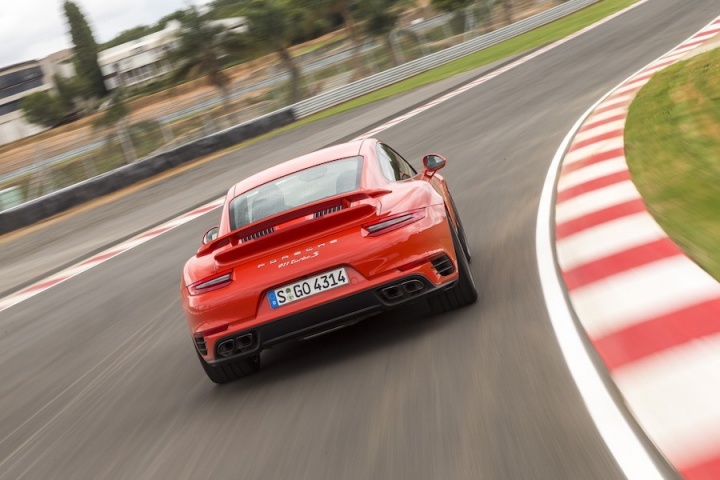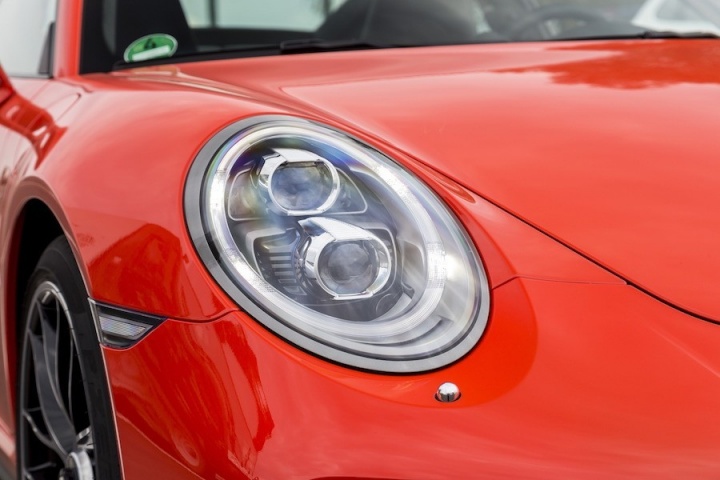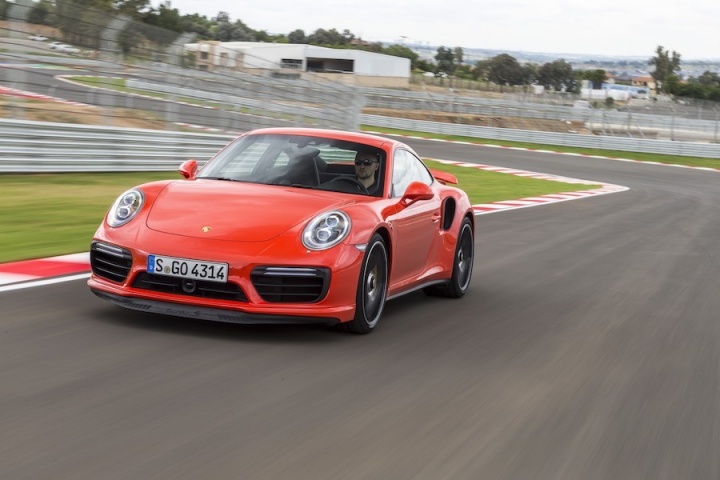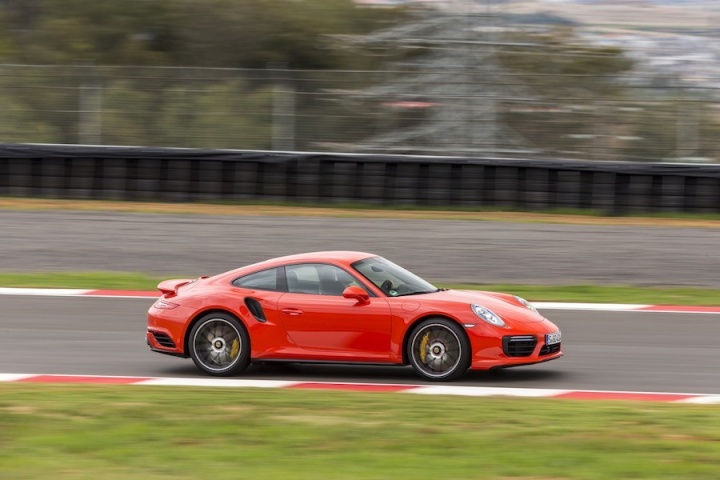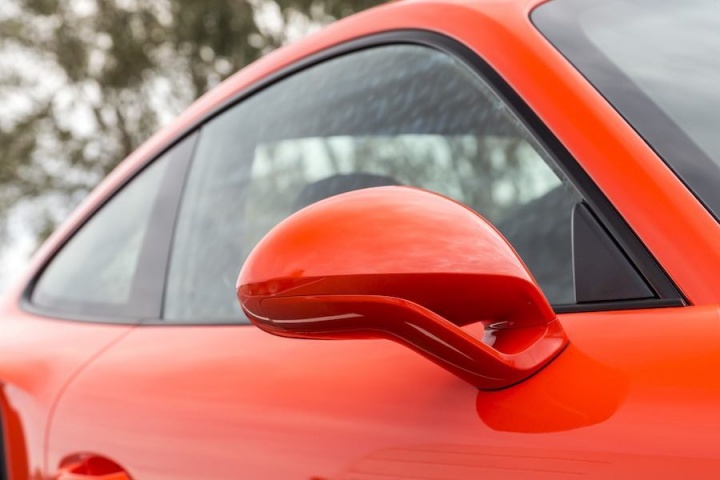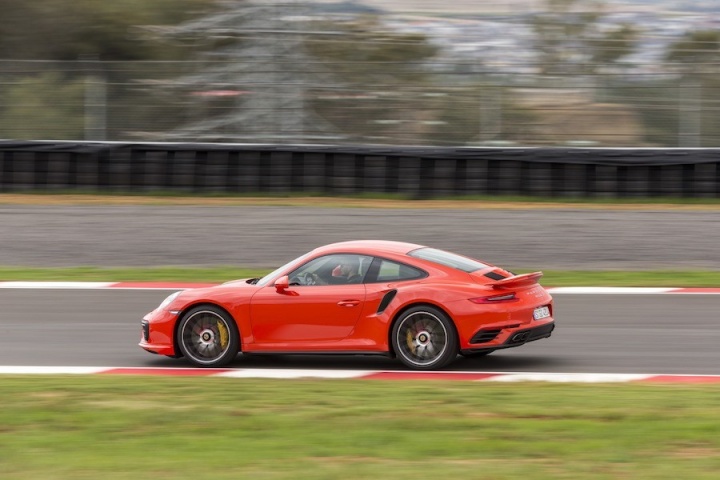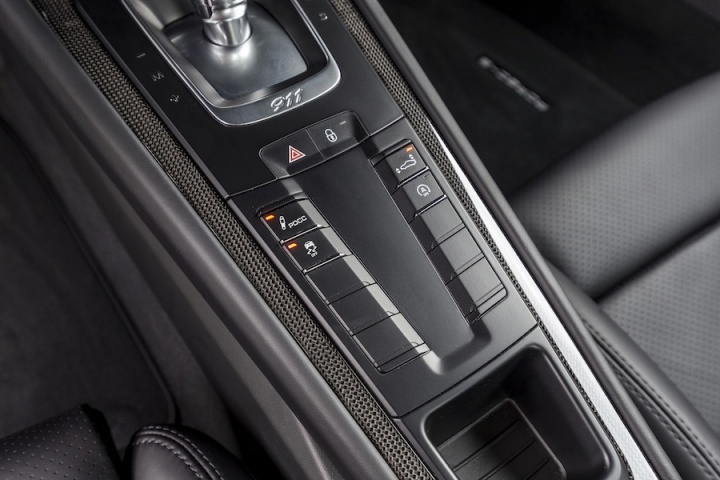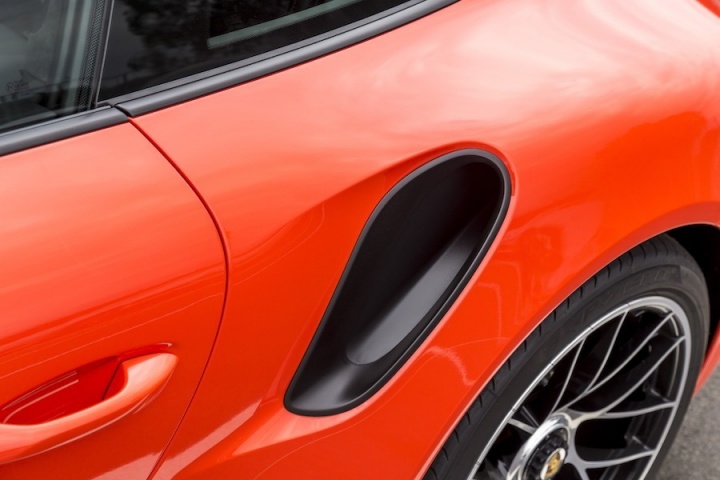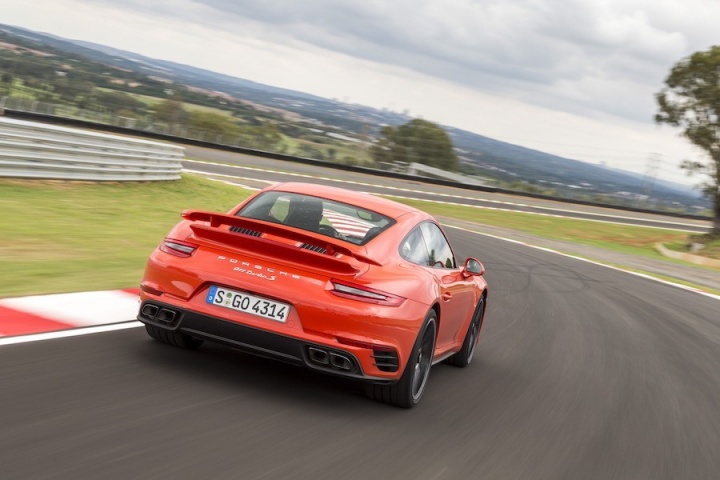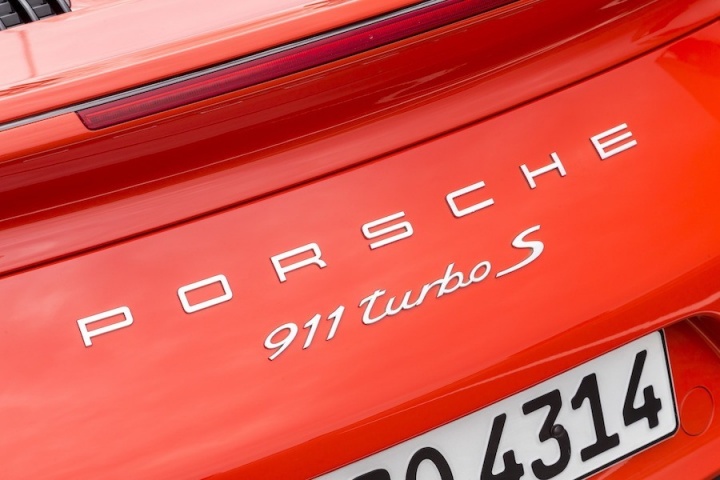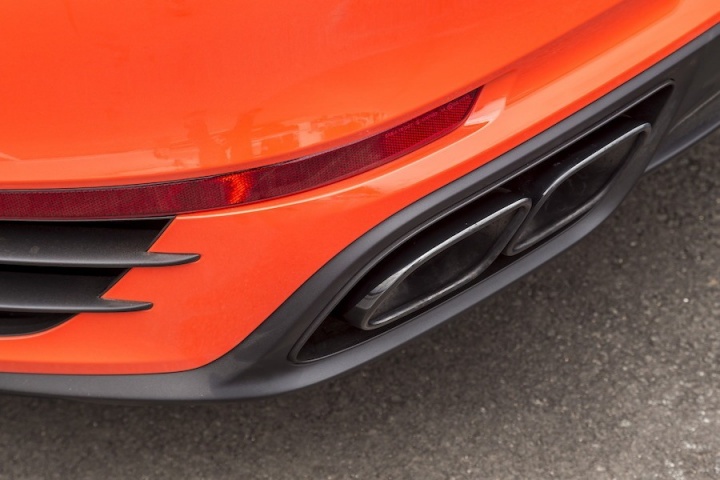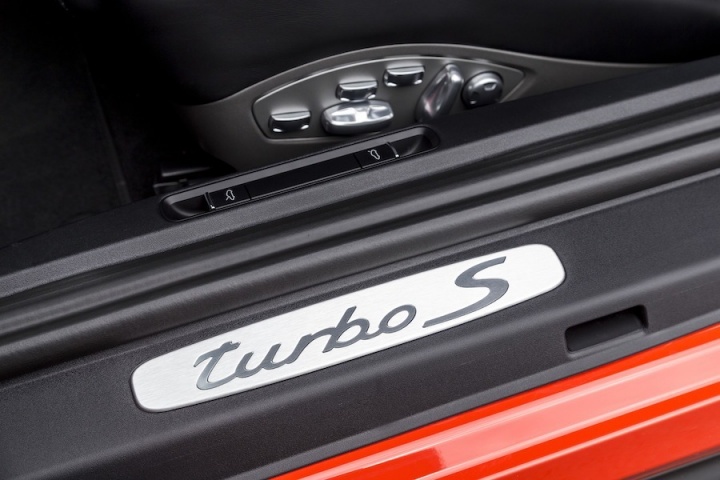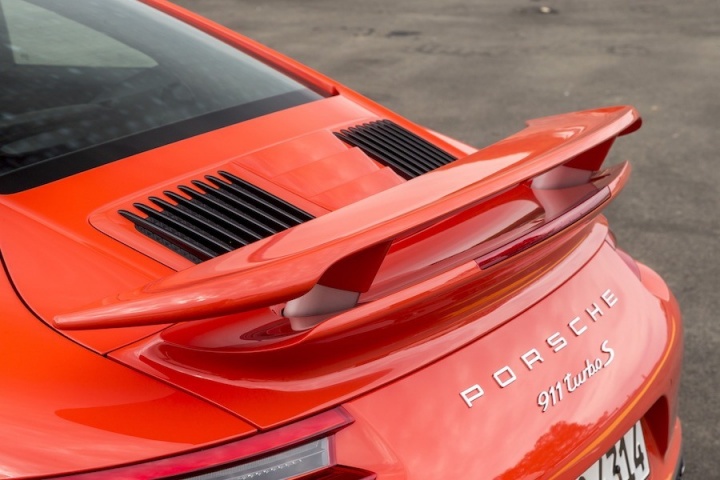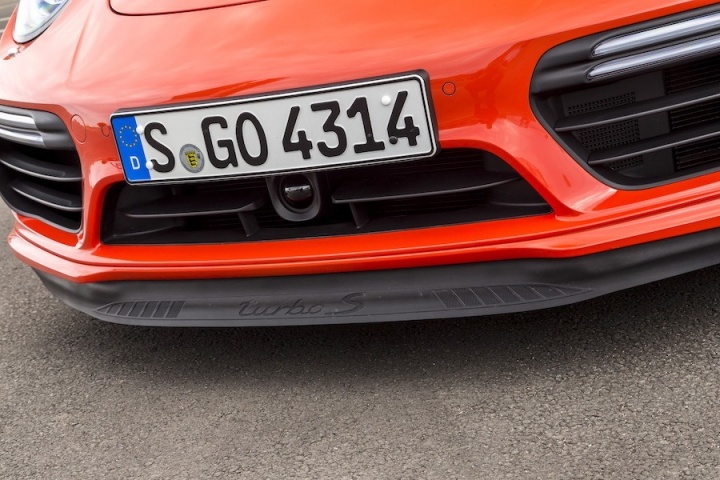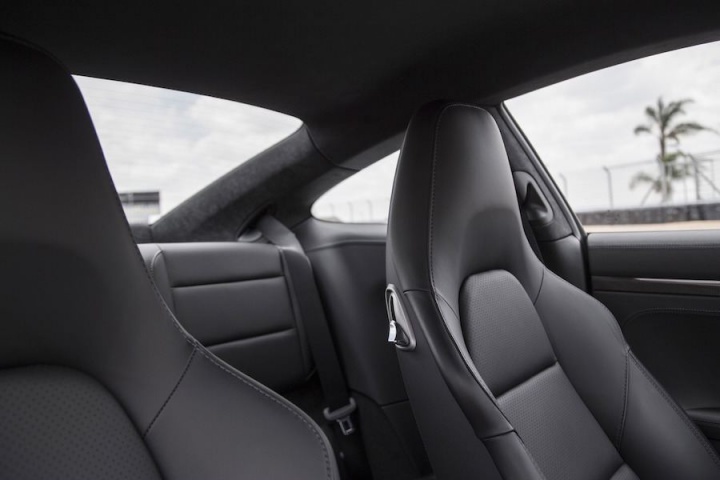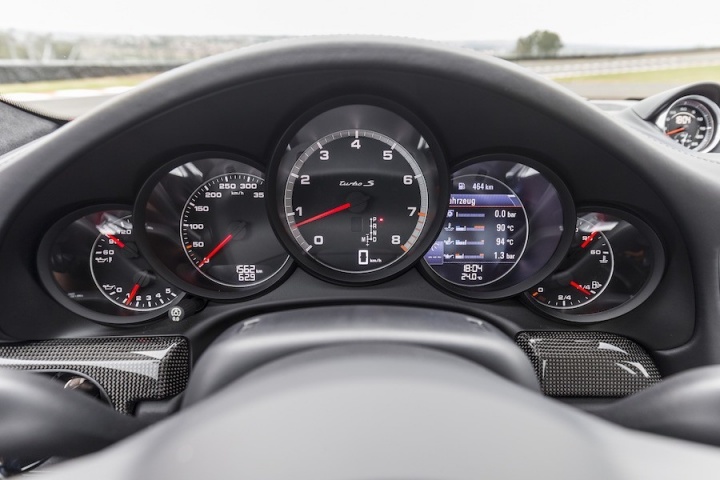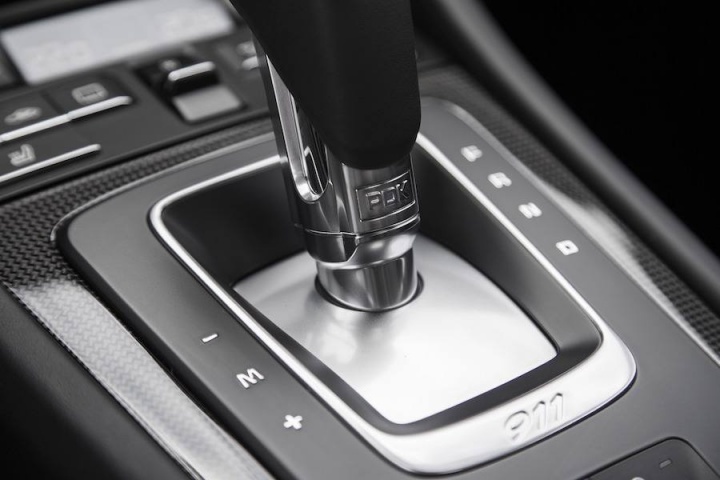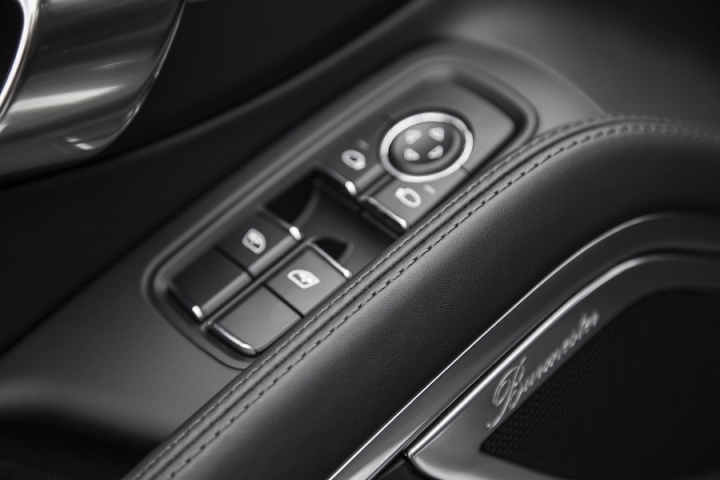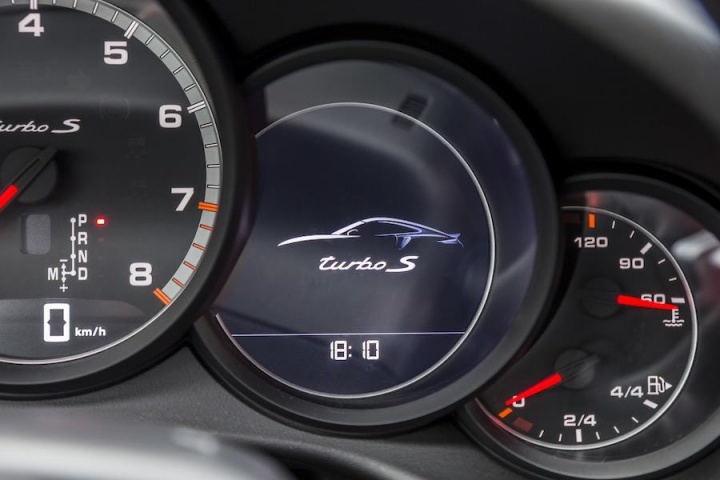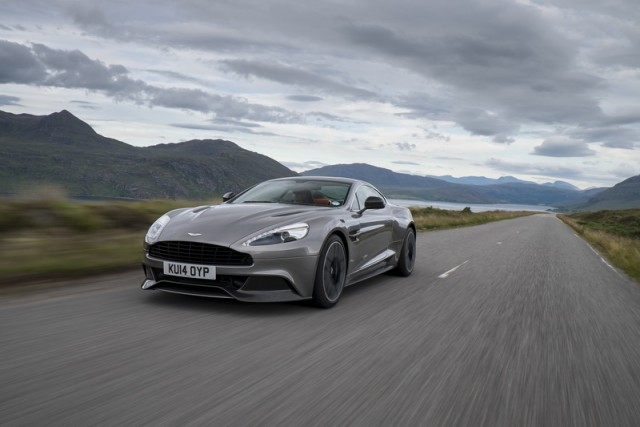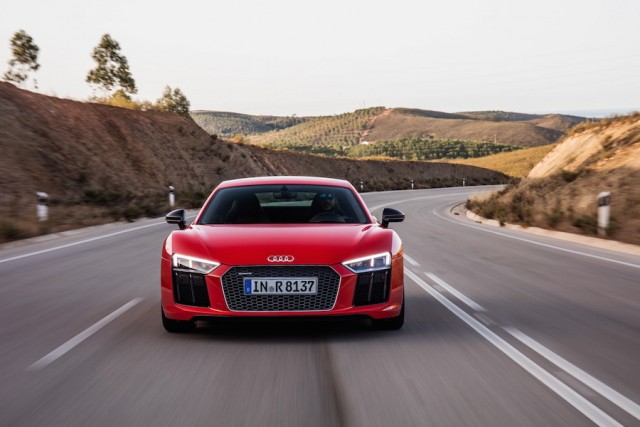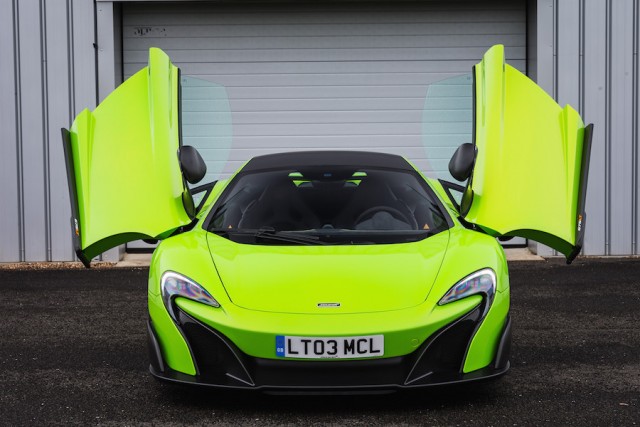That's Turbo with a capital T, and an S behind it for good measure, as Porsche has updated its Turbo S flagship to create its fastest series production car ever. Bonkers performance has never been more accessible, or, relatively speaking, inexpensive. The Turbo S is a car of incredible, unrivalled breadth of ability.
In the metal
This car is very obviously a Porsche 911 Turbo. The flatter and fatter rear haunches; their air intakes ahead of the rear wheels; plentiful venting around the rear bumper; a big active rear wing sat on top of a revised engine-lid cover; and a deep front spoiler with plenty of openings all indicate that you're looking at the range-topping 911. The Turbo S is further differentiated by black tipped exhausts, in case you missed the 'S' on the rear badge or the yellow callipers signalling the presence of standard PCCB ceramic composite brakes (those are optional on the - slightly - slower regular 911 Turbo. That familiar active rear spoiler is topped by the vertical strakes that delineate the latest Carrera models, while there's also Porsche's new signature four-point lighting front and rear. Subtle and evolutionary, but then we'd expect nothing more from Porsche - its revisions are never in the dramatic sphere, visually at least.
There's an interior, which, like the 911 Carreras, gets a new GT steering wheel with standard 'Mode Switch'. It features the 'Sport Response' button as standard. That's Porsche's equivalent of Spinal Tap's volume knob that goes up to 11, turning up every system to its maximum for 20 seconds of the Turbo S's most explosive force. Helpful for overtaking they say; a gimmick to show your pals in reality. There's a new infotainment screen too, neatly integrating all the connectivity that's been available elsewhere for a while now, Porsche finally catching up with customer's expectations for smartphone integration, connectivity and operating familiarity. No huge surprises, then, as most of the changes have already been wheeled out on the new Carrera. Porsche is playing catch-up with its range-topper.
Driving it
Visually, the updated 911 Turbo might be difficult to spot for all but the most dedicated of Porsche fans, but the Turbo S's technical revisions go a bit deeper. For the first time, the S's variable vane turbochargers differ from its regular Turbo relative's; they're bigger, allowing it an additional 20hp for its maximum 580hp output. Torque remains unchanged at an overboost aided 750Nm. Those numbers, combine with a revised PTM (Porsche Traction Management) four-wheel drive system and PDK automatic transmission for a repeatable 2.9-second 0-100km/h time and a 330km/h top speed. That 'repeatable' is significant, as Porsche has always been conservative with its quoted performance figures, picking a worst-case scenario. The Turbo S, in perfect conditions, should be able to better that by almost half a second. Ridiculously fast, then.
That's McLaren 675LT bettering pace, the 911 Turbo S putting its four-wheel drive traction advantage to work. Porsche has also optimised the driving mode selections, traction and stability electronics, throttle mapping and PDK automatic transmission software to produce greater performance, yet still achieves an improvement in economy and emissions. The way the Turbo S accelerates is incredible, the pace relentless, Porsche having worked extensively on the engine's response, adding features like dynamic boost, which holds open the throttle valve briefly when the accelerator is momentarily lifted, retaining charge pressure for increased immediacy when the accelerator is re-applied. Like that Sport Response button, you'll scarcely find an occasion when the response is ever anything but instantaneous, or the resultant acceleration other-worldly.
If the engine's lacking in any area it's in the aural department. The standard turbocharged Carreras show that forced induction doesn't have to mean a lack of aural appeal (albeit with some help from the optional sports exhaust), but the Turbo S doesn't deliver on that side. It's denied any real mechanical symphony; it's more an intake, breathy and gasping collective, which unquestionably delivers sensational pace, just without an evocative backing track. That remoteness is present in the steering too, which, while undeniably accurate, lacks the weighting and feel that's present even in the four-wheel drive 911 Carreras. On the road, the Turbo S's performance is very much in the aloof scale; you'll never need anything more than the lightest push of the accelerator to make indecent progress. The suspension rides remarkably well given its standard 20-inch wheels and the massive rubber they're fitted with, while the standard PDCC chassis brings roll-free cornering. You'll need the space of a race track to get anywhere near the grip and traction limits.
Usefully, Porsche has a stake in Kyalami, South Africa, a wide, recently re-surfaced and re-profiled, undulating and fast circuit. While not a natural track car - despite its GT3 RS-bettering 7m 18sec Nürburgring lap time - the Turbo S monsters around the testing track with contemptuous ease. The twin-turbo flat-six shortens the straights, the PDK swiftly shifting through its seven ratios, while the huge torque flattens the gradients and the brakes shrug off repeated requests for stops from 250km/h. The four-wheel drive system delivers massive reassurance and stability despite some fairly challenging conditions thanks to standing and run-off water from a recent storm. The 911 Turbo will move around underneath you, particularly if you take advantage of the engine's unique position to trail brake into bends and use the resultant weight shift to set it up and power through in a four-wheel drift. Track-only stuff that, and all within the thresholds of the PSM Sport Mode, which is surprisingly trusting before it feels the need to intervene.
Incredible as the performance is, there's little delicacy to it; the Turbo S is a hugely effective machine, if a blunt one in comparison to its more delicate, feelsome and engaging supercar rivals. That's part of its make-up though, which allows it its amazing - unrivalled even - breath of ability. The 911 Turbo S is something of a unique supercar proposition, which goes a long way to explaining its enduring and popular appeal.
What you get for your money
This is a supercar you can use every day, and a comparatively inexpensive one, too - which sounds like a strange thing to say about a car that costs the wrong side of a quarter of a million Euro. The Turbo S's performance is very much at the upper echelons of the supercar sphere, which makes its price look like a comparative bargain. You could conceivably drive it out of the showroom without ticking a single option and be happy with the standard equipment - though at this level all buyers add a few thousand Euro in desirable extras.
Summary
Always a sensational high-performance range-topper, the Porsche 911 Turbo S remains an unrivalled all-round proposition. It features crushing capability, if not spine-tingling emotional appeal, though it's undoubtedly a fitting head for an impressive 911 range. It's difficult to comprehend what Porsche will do with it next.

